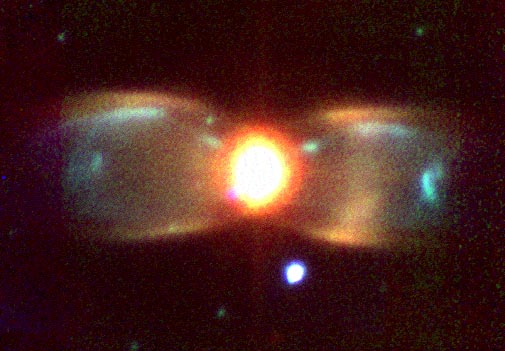Explanation: As stars age, they throw off their outer layers. Sometimes a highly symmetric gaseous planetary nebula is created, as is the case in M2-9, also called the Butterfly. Most planetary nebulae show this bipolar appearance, although some appear nearly spherical. An unusual characteristic of the Butterfly is that spots on the "wings" appear to have moved slightly over the years. The above picture was taken in three bands of infrared light and computationally shifted into the visible. Much remains unknown about planetary nebulae, including why some appear symmetric, what creates the knots of emission (some known as FLIERS), and how exactly stars create them.
1999 2000 2001 2002 2003 2004 2005 2006 2007 2008 2009 2010 2011 2012 2013 2014 2015 2016 2017 2018 2019 2020 2021 2022 2023 2024 2025 |
Январь Февраль Март Апрель Май Июнь Июль Август Сентябрь Октябрь Ноябрь Декабрь |
NASA Web Site Statements, Warnings, and Disclaimers
NASA Official: Jay Norris. Specific rights apply.
A service of: LHEA at NASA / GSFC
& Michigan Tech. U.
|
Публикации с ключевыми словами:
planetary nebula - butterfly nebula - Планетарная туманность - Эволюция звезд - инфракрасное излучение
Публикации со словами: planetary nebula - butterfly nebula - Планетарная туманность - Эволюция звезд - инфракрасное излучение | |
См. также:
Все публикации на ту же тему >> | |
